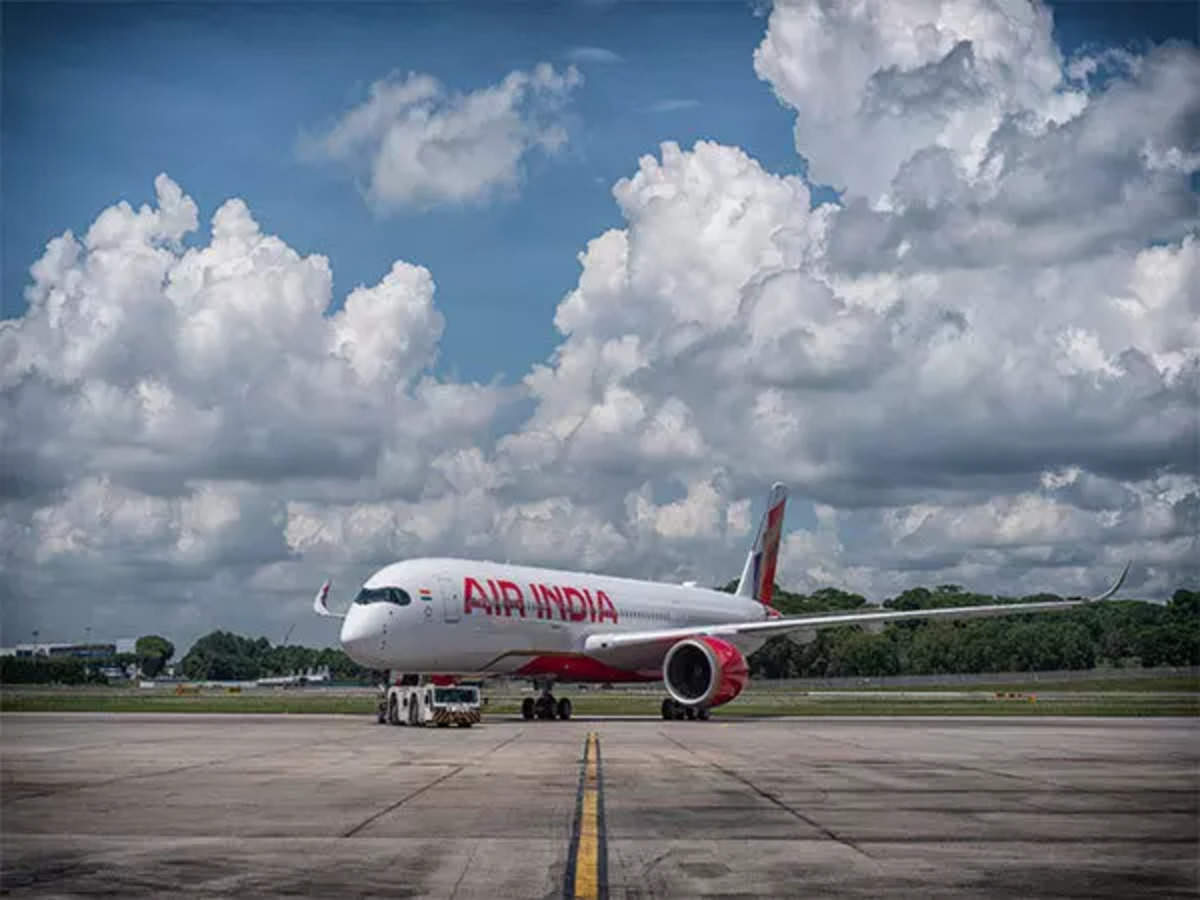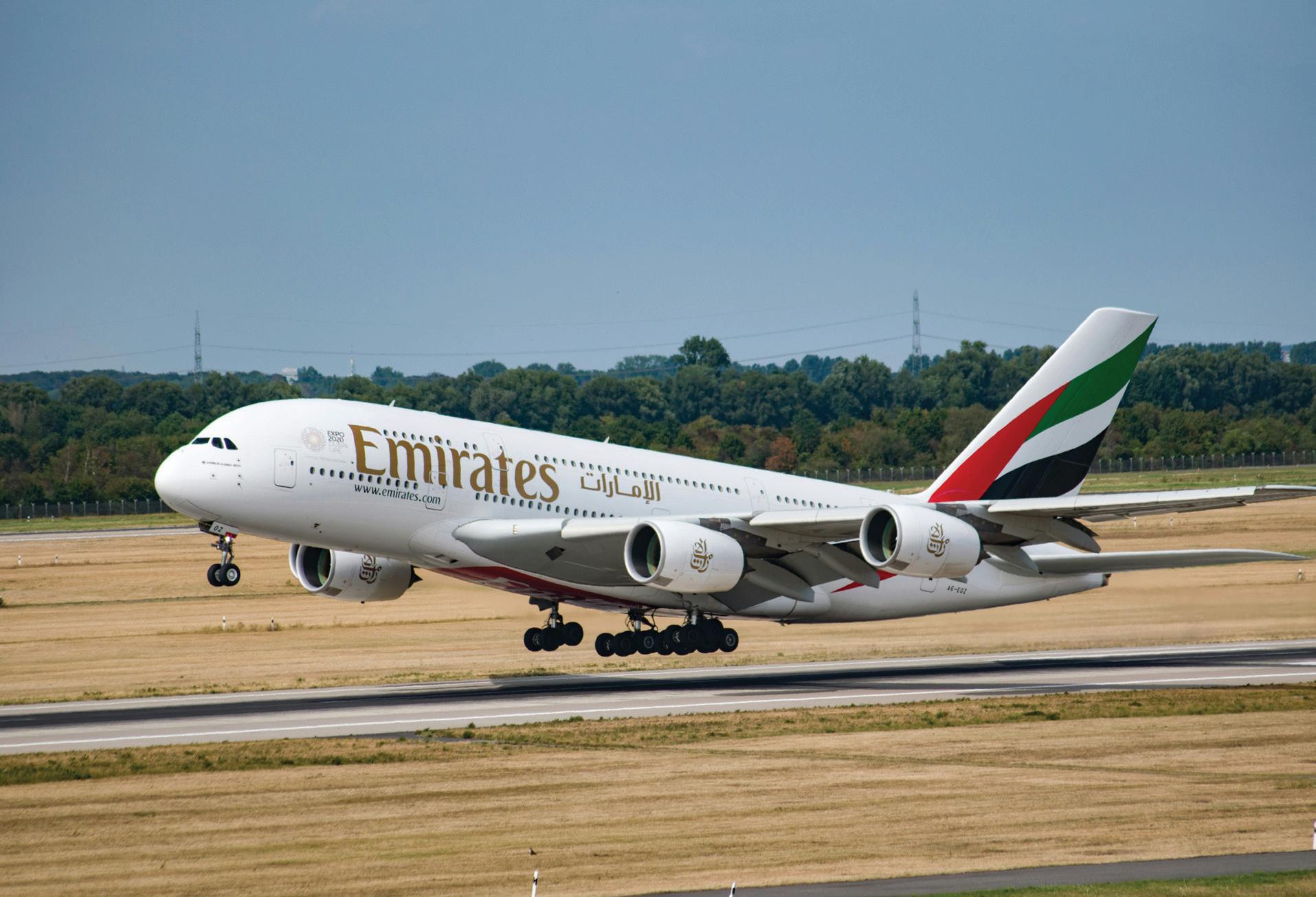These aircraft are slated to serve short- to medium-haul routes within the Emirates network, with Bahrain being the debut destination.
Emirates has unveiled its inaugural lineup of destinations for its A350 aircraft, set to commence service in September 2024. The airline’s plan includes deploying 10 new A350s by March 31, 2025, to nine selected destinations, promising travelers the latest in cabin experiences.
The initial batch of Emirates A350s will feature three distinct cabin classes: 32 Business Class seats, 21 seats in Premium Economy, and 259 seats in Economy Class. These aircraft are slated to serve short- to medium-haul routes within the Emirates network, with Bahrain being the debut destination.
As Emirates integrates the A350s into its fleet, passengers will have more opportunities to enjoy the acclaimed Premium Economy product and explore the next generation of Business Class cabins, particularly on routes spanning the Middle East, GCC, West Asia, and Europe.
Adnan Kazim, Deputy President and Chief Commercial Officer at Emirates Airline, emphasized the A350’s significance, stating it will revolutionize regional travel by enhancing operational efficiency and flexibility across key markets. The introduction of the latest cabin products underscores Emirates’ commitment to delivering unparalleled customer experiences, featuring sought-after Premium Economy offerings, advanced in-flight entertainment, and various customer-friendly amenities. Kazim noted that deploying the A350 to nine cities within a short timeframe expands premium cabin options across geographies, reinforcing Emirates’ competitive edge and industry-leading position.
The airline has outlined the following schedule for the rollout of A350 services:
Middle East/GCC:
The first A350 flight to Bahrain will commence on September 15, operating the daily EK839/840 service, with an increase in frequency to two services per day starting November 1.
Kuwait will welcome its first Emirates A350 on September 16, serving the daily EK853/854 route.
Muscat will see A350 service on the daily EK866/867 flight from December 1.
West Asia:
Mumbai will be served by the A350 starting October 27 on the EK502/503 route.
Ahmedabad’s daily EK538/539 service will transition to A350 operation from October 27.
Colombo’s fourth daily service, EK654/655, will be operated by the A350 from January 1, 2025.
Europe:
Lyon will receive daily A350 service from December 1.
Bologna will be served by the A350 starting December 1.
Edinburgh will rejoin the Emirates network on November 4, operated by the A350, with further details to be announced.
Emirates plans to unveil additional destinations as new A350 aircraft join its fleet. Tickets for A350 flights are now available for purchase on emirates.com, the Emirates App, or through travel agents.
Passengers can anticipate a spacious and serene cabin onboard the A350, featuring high ceilings, ample bin space, and personalized mood lighting aimed at reducing fatigue and jet lag. Further details regarding seat features and cabin amenities will be disclosed in the coming months.
With 65 A350-900s on order, Emirates strategically aligns its fleet expansion with future growth plans and Dubai’s economic agenda, as outlined by HH Sheikh Mohammed bin Rashid Al Maktoum, aiming to integrate 400 cities into Dubai’s foreign trade map over the next decade.
Emirates has today announced the first set of destinations to be served by its A350 aircraft, which will enter service in September 2024. With 10 new A350s expected to join the Emirates fleet by March 31, 2025, the airline plans to deploy its latest aircraft type to nine destinations in the coming months, offering customers its latest signature cabin experiences.
These first 10 Emirates A350 aircraft will offer three cabin classes, with 32 next-generation Business Class seats, 21 seats in Premium Economy, and 259 generously pitched Economy Class seats. All of these aircraft are earmarked to serve short- to medium-haul cities on the Emirates network, with Bahrain as its inaugural destination.
As the first Emirates A350s begin entering the fleet, the airline will offer customers more opportunities to experience its highly acclaimed Premium Economy product and sample its next generation of Business Class cabins for the first time, particularly on short and medium-haul routes in the Middle East and GCC, West Asia, and Europe.
Adnan Kazim, Deputy President and Chief Commercial Officer, Emirates Airline, said: “The A350 will be a game-changer for Emirates, enabling us to serve regional points with superior operating efficiency and flexibility across the Middle East and GCC, West Asia, and Europe. With the latest generation of cabin products, including more of our sought-after Premium Economy in more cities, top-notch in-flight entertainment technologies, and an abundance of other customer-friendly features, the Emirates A350 builds on our long-standing commitment to investing in the very best customer experience in the sky. Flying the A350 to nine cities in such a short span of time adds more premium cabin options and choice across geographies for our customers and ensures we maintain our competitive edge and industry-leading position.”
Newly delivered aircraft sporting the airline’s latest cabins will roll into scheduled service in the following cities:
In the Middle East/GCC:
Emirates will operate its first A350 to Bahrain on the daily EK839/840 service from September 15. The frequency of A350 services will progressively increase to cover two Bahrain services, with the second service starting on November 1.
The first Emirates A350 will land in Kuwait on the daily EK853/854 service on September 16.
Muscat’s daily EK866/867 will be served by the A350 from December 1.
In West Asia:
The Emirates A350 will be deployed on EK502/503 to Mumbai on October 27.
Ahmedabad’s daily EK538/539 will be served by the A350 from October 27.
Colombo’s fourth daily service, EK654/655, will be served by the A350 from January 1, 2025.
In Europe:
Lyon will be served daily with the Emirates A350 from December 1.
Bologna will be served by the A350 from December 1.
Edinburgh will rejoin the Emirates network on November 4, operated by the A350. More details are to follow soon.
Emirates will announce more destinations in the coming months as new aircraft join its fleet.
Emirates flights to A350 destinations go on sale today and can be booked on emirates.com, the Emirates App, or via travel agents.
Customers can look forward to the A350’s spacious and quiet cabin, high ceilings, expansive bin space, and customized mood lighting designed to reduce fatigue and jet lag. Additional Emirates A350 seat features and other cabin details will be announced in the coming months.
Emirates has 65 A350-900s on order, and all are carefully planned to support the airline’s future growth as well as Dubai’s economic agenda set out by HH Sheikh Mohammed bin Rashid Al Maktoum to add 400 cities to Dubai’s foreign trade map over the next decade.


 Opinion3 years ago
Opinion3 years ago
 Entertainment8 years ago
Entertainment8 years ago
 Entertainment8 years ago
Entertainment8 years ago
 Fashion8 years ago
Fashion8 years ago
 Opinion3 years ago
Opinion3 years ago
 Politics8 years ago
Politics8 years ago
 Entertainment8 years ago
Entertainment8 years ago
 Entertainment8 years ago
Entertainment8 years ago





















